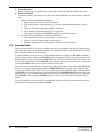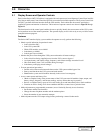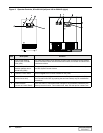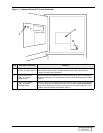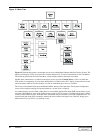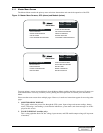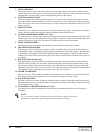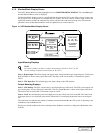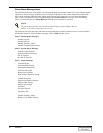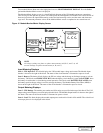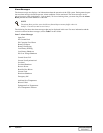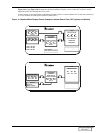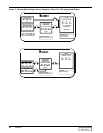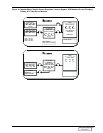
30 Operation
3. STATUS REPORTS.
This display consists of three sub-menu selections: present status, history status, and event history. These
screens display data on the system’s present and past performance. They also display information about any
faults that have occurred in the system and total operating hours for the controls.
4. SYSTEM CONFIGURATION.
This screen displays the current configuration of the UPS system. It also enables the operator to reset the
date, time, and dial-out phone numbers. The SCC current rating can also be adjusted lower than design max-
imum. The operator can view, but cannot change, any of the settings unless the Interlock (Security Access)
button is pressed.
5. LIMIT SETTINGS.
This security access display shows the present UPS system alarm limit settings. The operator can view the
settings, but they should not be changed without consulting Liebert Global Services.
6. LOAD TRANSFER PROCEDURES (SCC only).
This screen specifies all of the steps required to manually transfer the critical load between the UPS system
and the bypass source. Comparisons of the voltage frequency, and phase synchronization of the UPS system
output and the bypass line are also illustrated to aid in the transfer or retransfer procedure.
7. START-UP PROCEDURES.
This two-page screen lists step-by-step procedures to start the UPS system and the modules.
8. SHUTDOWN PROCEDURES.
This two-page screen lists the proper sequence of steps to shutdown the UPS system and the modules for
maintenance or repairs. The steps instruct the operator to transfer the critical load to bypass, open the battery
circuit breakers, and open the UPS module output and input circuit breakers to shut down and isolate the
modules. The critical load will remain on bypass power unless circuit breakers outside the UPS system are
also opened.
9. BATTERY TIME (modules only).
This graph displays the projected battery voltage drop caused by a battery discharge over time. During a
period of battery discharge, the Series 600T calculates the battery time remaining based on battery rating,
initial battery c ondition, and actual connected load. The UPS continues to update and display both rated
(theoretical) and calculated time every 6 seconds. This enables the operator to immediately see the effects of
load shedding on time remaining and to accurately assess his power resources.
10. METER CALIBRATION.
This security access screen enables an authorized Liebert field-service engineer to adjust and calibrate the
UPS metered functions. The operator can view, but should not change, any of the settings
11. BATTERY EQUALIZE.
The battery equalize screen lets the operator change the battery equalize recharging mode from manual to
automatic and to observe or change the equalize time. Battery equalize charge voltage is higher than battery
float (constant) charge voltage.
12. CUSTOMER ALARM DEFINITIONS (SCC only).
This optional screen allows the operator to define alarms for conditions external to the UPS, battery, or
switchgear.
NOTE
Do not use battery equalize charging with sealed-cell batteries. Refer to the battery
manufacturer’s manual for specific information about equalize charging.
DISCONTINUED
PRODUCT



